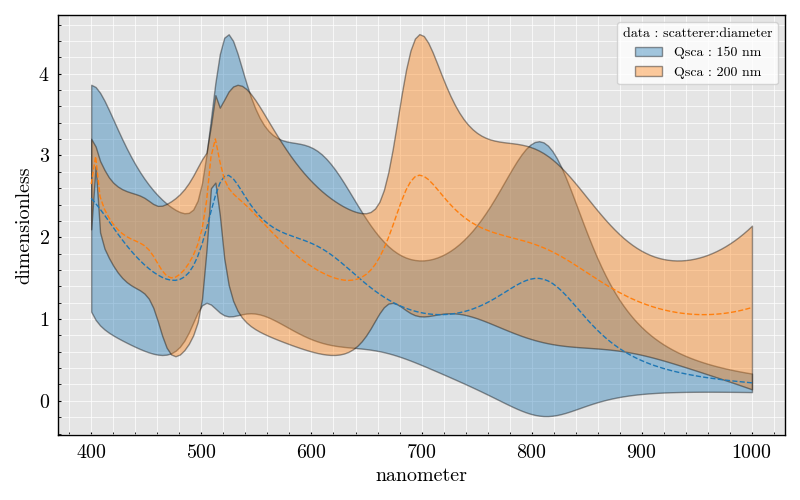Note
Go to the end to download the full example code.
Cylinder: Qsca vs Wavelength#
This example demonstrates how to compute and visualize the scattering efficiency (Qsca) as a function of wavelength for cylindrical scatterers using PyMieSim, considering cylinders with different diameters and refractive indices.
Importing the package dependencies: numpy, PyMieSim
import numpy as np
from TypedUnit import ureg
from PyMieSim.experiment.scatterer import Cylinder
from PyMieSim.experiment.source import Gaussian
from PyMieSim.experiment import Setup
source = Gaussian(
wavelength=np.linspace(400, 1000, 150)
* ureg.nanometer, # Wavelengths ranging from 400 nm to 1000 nm
polarization=0 * ureg.degree, # Linear polarization angle in radians
optical_power=1e-3 * ureg.watt, # 1 milliureg.watt
NA=0.2 * ureg.AU, # Numerical Aperture
)
scatterer = Cylinder(
diameter=[200, 150] * ureg.nanometer, # Array of diameters: 200 nm, 150 nm, 100 nm
property=[2, 3, 4] * ureg.RIU, # Array of refractive indices: 2, 3, 4
medium_property=[1] * ureg.RIU, # Refractive index of the surrounding medium
source=source,
)
experiment = Setup(scatterer=scatterer, source=source)
dataframe = experiment.get("Qsca")
dataframe.plot(x="source:wavelength", std="scatterer:property")

<Figure size 800x500 with 1 Axes>
Total running time of the script: (0 minutes 0.339 seconds)
